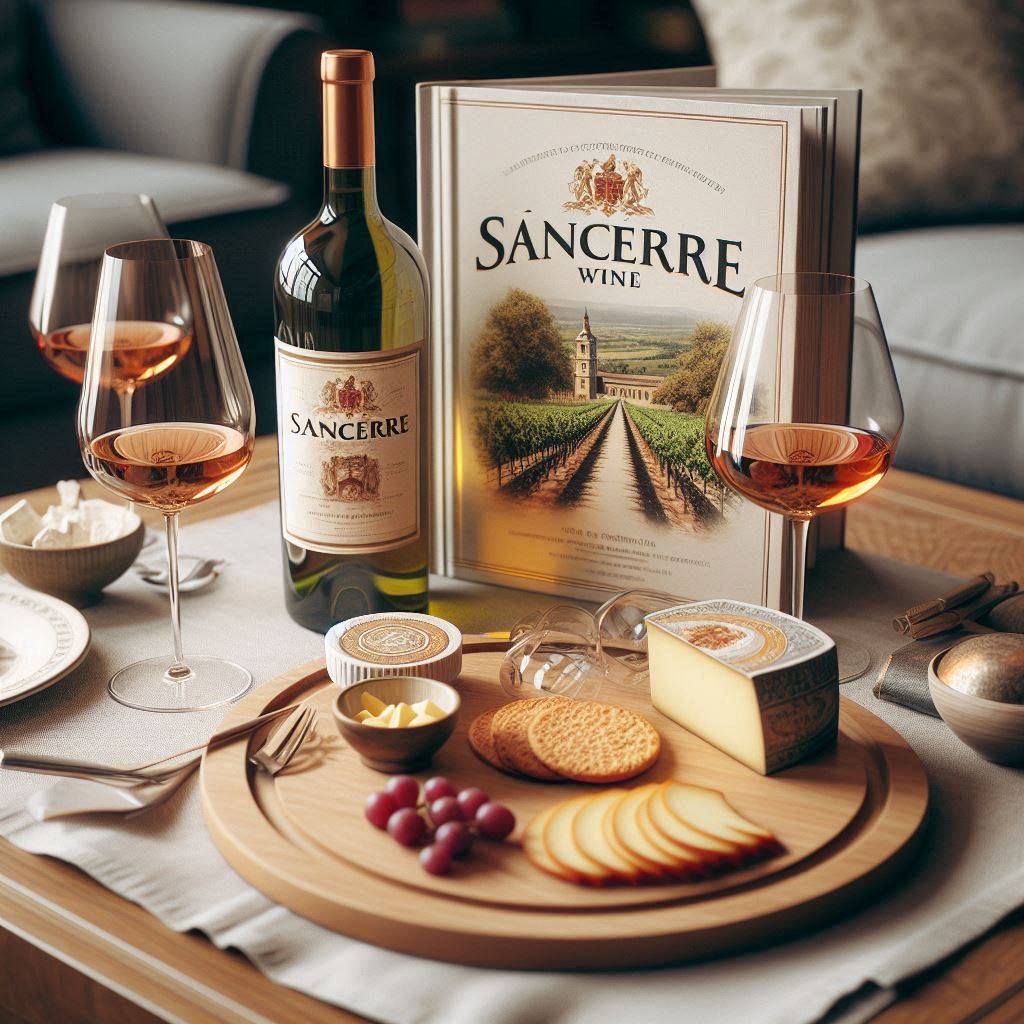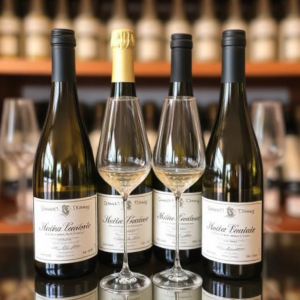A Comprehensive Guide to Sancerre Wine: Everything You Need to Know.1

Sancerre wine, often regarded as one of the finest white wines in the world, hails from the Loire Valley in France. Known for its vibrant, refreshing taste and remarkable versatility, Sancerre offers a distinctive experience that both beginners and seasoned wine enthusiasts can appreciate. In this comprehensive guide, we will explore everything you need to know about Sancerre wine: its history, production methods, types, tasting notes, food pairings, and how to select the best bottle. Whether you’re a novice or an expert, this guide will provide actionable tips to enhance your wine experience.
What is Sancerre Wine?
Sancerre wine is a white wine made from the Sauvignon Blanc grape, although red and rosé versions are also produced in limited quantities. Originating from the Sancerre region in the Loire Valley, France, the wine is known for its crisp acidity, citrus flavors, and a signature minerality that reflects the terroir of the region.
Sancerre is often described as a quintessential expression of Sauvignon Blanc, showcasing the grape’s best characteristics—intense fruitiness, aromatic complexity, and a refreshing, dry finish. The white wines of Sancerre are especially famous for their balance of freshness and depth, which makes them incredibly popular with wine lovers worldwide.

Key Characteristics of Sancerre Wine
-
Primary Grape Variety: Sauvignon Blanc
-
Wine Types: White, Red, Rosé (white being the most common)
-
Flavor Profile: Crisp acidity, citrus notes (lemon, lime), green fruits (gooseberry, green apple), floral hints, and a signature minerality.
-
Region: Sancerre, Loire Valley, France
-
Aging Potential: White Sancerre wines are typically consumed young, though some can age well for 3-5 years, developing more complexity.
History of Sancerre Wine
The history of Sancerre wine dates back to Roman times when vineyards were first planted in the region. However, it wasn’t until the 19th century that Sancerre wine began to gain its current reputation. The wine industry in Sancerre suffered during the phylloxera epidemic in the late 1800s, but since then, the region has rebounded to become one of the most renowned wine-producing areas in France.
Today, Sancerre is part of the AOC (Appellation d’Origine Contrôlée) classification system, which guarantees the wine’s origin and quality. The Sancerre region is small but prestigious, with vineyards situated along the banks of the Loire River. The region’s diverse terroirs—from chalky soils to flinty hillsides—play a crucial role in shaping the flavor and character of the wine.
The Production Process of Sancerre Wine
The production of Sancerre wine follows traditional methods, with careful attention paid to the vineyards and the fermentation process. To understand how Sancerre wine achieves its distinct taste, it’s essential to explore the production process in more detail.
1. Vineyard Practices and Terroir
The terroir of Sancerre is one of the most critical factors influencing the wine’s flavor profile. The soil is rich in limestone, flint, and clay, which imparts a characteristic minerality to the wine. Sancerre vineyards are often located on steep slopes, which helps with drainage and exposes the vines to optimal sunlight.
“The terroir of Sancerre, with its varied soils and steep slopes, imparts a unique minerality and crisp freshness to the wine, making it one of the most distinctive expressions of Sauvignon Blanc.” – Wine Expert, Jean-Baptiste Lemoine
2. Harvesting and Winemaking Techniques
The grape harvest in Sancerre typically occurs in late September or early October. The harvest is often done by hand to ensure the grapes are selected at their peak ripeness. After the grapes are harvested, they are gently pressed to extract the juice, which is then fermented in stainless steel tanks. This process helps preserve the fresh fruit aromas and maintains the wine’s crisp acidity.
While some winemakers may opt for malolactic fermentation (which softens acidity), it is typically avoided in Sancerre to preserve the wine’s signature sharpness and freshness.
3. Aging and Bottling
After fermentation, Sancerre wine is aged for several months before being bottled. Most white Sancerre wines are released early to retain their youthful freshness. However, some premium producers may age their wines in oak barrels or allow them to rest on their lees (dead yeast cells) for added complexity.
Tasting Notes: What to Expect from Sancerre Wine
Sancerre is celebrated for its crisp and refreshing profile, making it a favorite among white wine enthusiasts. Here’s a breakdown of what to expect when you open a bottle of Sancerre.
Appearance
-
Color: Pale straw yellow with greenish hues.
-
Clarity: Clean and bright.
Nose (Aroma)
-
Primary Aromas: Crisp citrus (lime, lemon, grapefruit), green apple, gooseberry, and hints of tropical fruit (such as passionfruit).
-
Secondary Aromas: Floral notes (such as elderflower), grass, and a distinct minerality.
Palate (Taste)
-
Flavor Profile: The palate of Sancerre is characterized by its bright acidity and fresh fruit flavors. You’ll notice flavors of lemon, lime, and green apple, often accompanied by a subtle herbal or grassy note. A hallmark of Sancerre is its mineral edge, which gives the wine a dry and steely finish.
-
Body: Light to medium-bodied, with a clean and refreshing mouthfeel.
-
Finish: Crisp, lingering finish with pronounced minerality.
Food Pairing with Sancerre Wine
Sancerre’s versatility makes it a fantastic companion to a wide range of foods. Whether you’re having a light seafood dish or a rich goat cheese salad, Sancerre can complement your meal beautifully. Here are some ideal food pairings:

1. Seafood
-
Oysters
-
Mussels
-
Grilled fish (especially white fish)
-
Shrimp and crab
2. Cheese
-
Goat cheese (Sancerre is often paired with Chavignol, a local goat cheese)
-
Feta
-
Fresh cheeses like ricotta or mozzarella
3. Salads and Vegetables
-
Green salads with a citrus vinaigrette
-
Asparagus, artichokes, or peas
-
Fresh herbs (such as basil or parsley)
4. Chicken and Poultry
-
Grilled or roasted chicken
-
Turkey
“Sancerre’s acidity and minerality make it an ideal pairing for fresh seafood and goat cheese, which is a classic combination in the Loire Valley.” – Sommelière, Claire Dubois
How to Select the Best Sancerre Wine
When choosing a bottle of Sancerre, there are a few important factors to consider:
1. Look for Trusted Producers
-
Some of the most reputable producers of Sancerre wine include Domaine Vacheron, Domaine François Cotat, and Domaine Gerard Boulay. These producers are known for their high-quality wines that reflect the unique terroir of Sancerre.
2. Check the Vintage
-
While Sancerre wines are generally best enjoyed young (within 1-3 years of release), certain vintages may have better aging potential due to favorable weather conditions. For example, vintages from 2019 and 2020 are regarded as exceptional.
3. Consider the Style
-
Choose a wine based on your preference for a more fruit-forward, zesty style, or one that has more minerality and complexity. Look for labels or producer descriptions that indicate the wine’s style and aging process.
Sancerre Wine: Key Information in a Table
| Category | Details |
|---|---|
| Grape Variety | Sauvignon Blanc (White), Pinot Noir (Red) |
| Region | Sancerre, Loire Valley, France |
| Typical Flavors | Lemon, lime, green apple, gooseberry, passionfruit, minerality |
| Body | Light to medium-bodied |
| Aging Potential | 1-5 years (mostly consumed young) |
| Best Pairings | Seafood, goat cheese, salads, grilled chicken |
| Notable Producers | Domaine Vacheron, Domaine François Cotat, Domaine Gérard Boulay |
| Price Range | $20 – $50 (can vary depending on producer and vintage) |
FAQ About Sancerre Wine
1. Is Sancerre wine sweet or dry? Sancerre is typically a dry wine, characterized by its crisp acidity and fresh, citrus flavors. The minerality adds to its dry, steely finish.
2. Can I age Sancerre wine? While Sancerre is generally meant to be enjoyed young, some premium Sancerre wines, especially those from exceptional vintages, can age for a few years, developing more complex flavors.
3. What’s the best temperature to serve Sancerre wine? Sancerre should be served chilled, ideally between 45-50°F (7-10°C), to preserve its freshness and acidity.
4. What makes Sancerre different from other Sauvignon Blanc wines? Sancerre stands out due to its unique terroir in the Loire Valley, which imparts a distinctive minerality and crisp acidity not always found in other Sauvignon Blanc wines, particularly those from New Zealand or California.
Conclusion: Savoring the Essence of Sancerre Wine
Sancerre wine offers an exquisite experience, with its fresh, zesty flavors and mineral-driven character. Whether you’re new to wine or a seasoned connoisseur, Sancerre is a perfect wine for a wide range of occasions, offering both elegance and versatility. By understanding its production methods, tasting notes, and ideal food pairings, you can fully appreciate what makes this wine so special.
So, next time you’re at the wine store or browsing a wine list, consider choosing a bottle of Sancerre and experience its magic for yourself.



1 thought on “A Comprehensive Guide to Sancerre Wine: Everything You Need to Know.1”